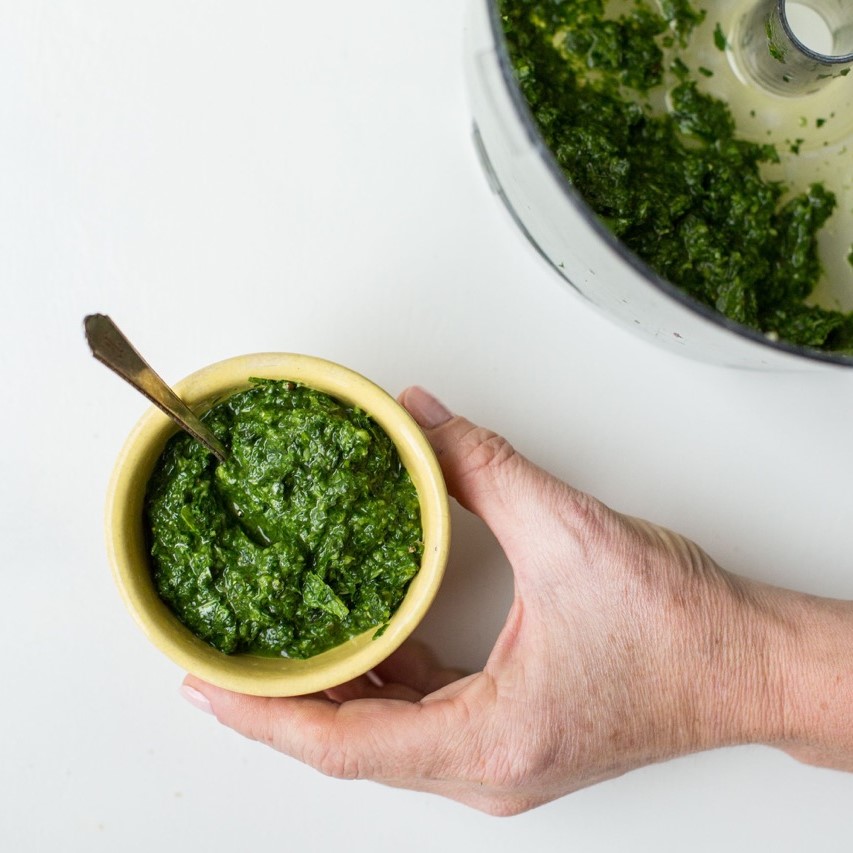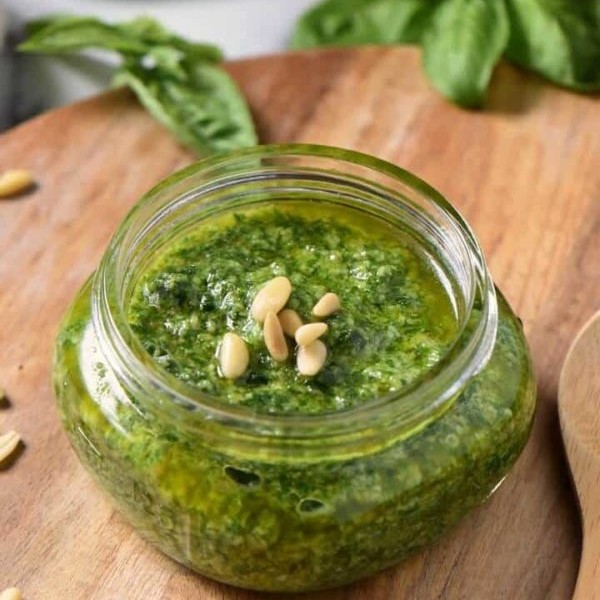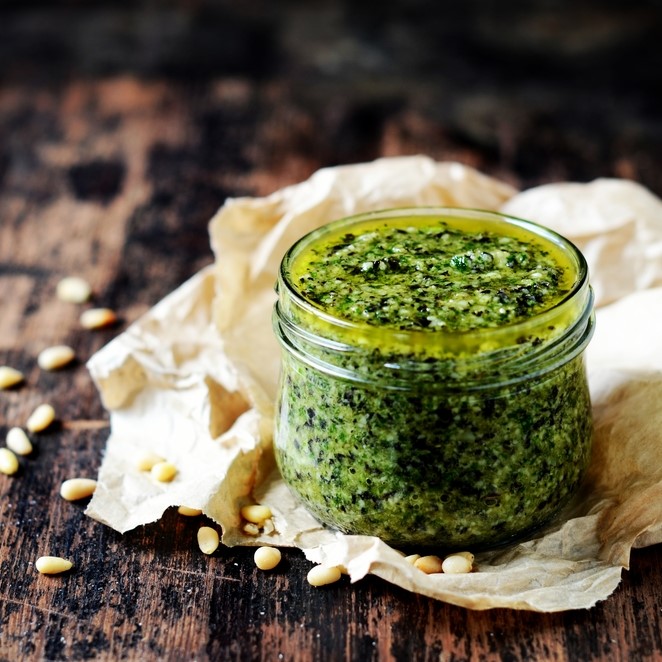
Pesto is a delicious and versatile sauce that enhances a variety of dishes, from pasta to sandwiches. Traditionally made with fresh basil, garlic, pine nuts, Parmesan cheese, and olive oil, this vibrant green sauce is a favorite among culinary enthusiasts. While many rely on a food processor to create the perfect pesto, it’s entirely feasible to make it by hand. In fact, taking the time to chop and mix by hand not only enriches the texture but also deepens your connection to the ingredients. In this guide, I will discuss the techniques and tools you can use to create a delightful pesto without the convenience of modern appliances.
Gathering Ingredients for a Hand-Made Pesto
The first step in any culinary adventure is gathering your ingredients. Because pesto relies heavily on the freshness and quality of its components, it’s crucial to choose each one carefully.
Fresh Herbs Are Essential
When making pesto, basil is the star of the show. You want to select vibrant green leaves that are free from bruises and browning. However, you can also experiment with other herbs. For instance, combining basil with parsley or arugula can add intriguing flavor notes. When you select herbs, remember that the fresher they are, the more aromatic and flavorful your pesto will be.
Choosing the Right Nuts
Pine nuts traditionally provide the rich, buttery flavor that complements basil. Nonetheless, they can be expensive and sometimes hard to find. Therefore, feel free to use other nuts like walnuts, almonds, or cashews. Each nut brings a unique flavor profile to the table, so think about what will best suit your palate.
Sourcing Quality Cheese
Parmesan cheese is the usual choice for a classic pesto. To ensure a rich and authentic flavor, seek out freshly grated or shaved Parmesan rather than its pre-grated counterpart. However, you might also explore alternatives like Pecorino Romano or even a dairy-free cheese option if you are looking for a vegan twist. Quality makes a significant difference in taste, so choose cheese that will elevate your dish.
Selecting the Perfect Olive Oil
Olive oil is the final key ingredient that brings everything together. The flavor of your pesto will vary greatly depending on the quality of the olive oil you use. A high-quality extra virgin olive oil will provide a lush, fruity undertone that enhances the overall sauce. Conversely, lower-quality oils may taste bitter or overly processed. Keep in mind that the oil acts as a binding agent in the mixture, so don’t skimp!
Tools You Will Need
Once you have gathered your ingredients, it’s time to assemble the tools that will help you create your pesto. While a food processor would be the obvious choice, there are alternative methods that can produce equally impressive results.
A Sharp Knife and Cutting Board
Your most essential tools will be a sharp knife and cutting board. With these, you will chop the basil, garlic, and nuts. Dicing the ingredients into small pieces allows for easier blending later on. Make sure your knife is sharp; it not only saves time but also helps release the essential oils in the herbs for more flavor.
A Mortar and Pestle
If you have one at your disposal, a mortar and pestle is a fantastic tool for making pesto. Not only does it allow for beautiful, traditional creation, but it also helps break down the ingredients naturally. The process of grinding allows the flavors to intermingle seamlessly while maintaining a textured finish.
Mixing Bowl and Spoon
Should you choose to forgo the mortar and pestle, a mixing bowl and a sturdy spoon or spatula can also do the job. You can combine your chopped ingredients directly in the bowl, using the spoon to mash everything together. While this method may require a bit of elbow grease, it is still effective.
Preparing the Ingredients
Before diving into the mixing process, take a moment to prepare your ingredient. This stage is crucial because how well your ingredients are prepared can greatly affect the flavor and texture of the final result.
Chopping the Herbs and Garlic
Begin by washing the basil leaves thoroughly to remove any dirt or impurities. Dry them gently by patting with a clean towel, ensuring that moisture does not dilute the flavor. Once dried, stack several leaves on top of each other, roll them tightly, and then slice them crosswise into thin strips. This method, known as chiffonade, produces long, fine pieces that integrate well into the pesto.
Next, move on to the garlic. Typically, only one or two cloves are required for a standard batch of pesto. Use the flat side of your knife to smash the cloves gently, making them easier to chop. Continue until you achieve a fine mince. As you slice the garlic, you’ll notice its strong aroma; this aromatic quality will elevate the complexity of your pesto.
Preparing the Nuts
If you decide to roast your nuts—an option that adds an extra depth of flavor—do so on low heat in a dry skillet. Stir continuously for even roasting, and remember to keep an eye on them to avoid burning. After roasting, allow the nuts to cool and then chop them into smaller pieces. Feel free to vary the size; larger pieces can add pleasant texture, while smaller pieces will blend more seamlessly into the sauce.
Grating the Cheese
If you opted for whole Parmesan cheese, use a microplane or box grater to shred it finely. This step ensures that the cheese will incorporate smoothly into your pesto. A finer shavings also allow the cheese to melt slightly when mixed with the warm pasta, creating a more cohesive sauce.
Mixing Your Pesto by Hand
With all your ingredients prepped, it’s time to combine them into a harmonious blend. Using only your hands or simple tools can be a rewarding experience. So, roll up your sleeves and prepare to get a little messy!
Combining Ingredients in the Mortar and Pestle
If you have a mortar and pestle, this is where they come into play beautifully. Start by placing the garlic and a pinch of salt in the mortar. Gently grind them into a paste, which will release the aromatic oils and provide a strong foundation for your pesto.
Once a paste forms, add the chopped nuts gradually. Using a circular motion, begin to grind these into the garlic paste. The goal here is to create a cohesive blend of flavors. As the nuts break down, you’ll notice how they begin to transform the texture and taste of the mixture.
Next, add the basil leaves a handful at a time, grinding them gently against the sides of the mortar. This process may take a little more time than a food processor, but it offers incredible satisfaction. As you grind, ensure you’re incorporating a small amount of olive oil to help emulsify the mixture.
Lastly, blend in the grated cheese, followed by the rest of the olive oil. Continue to grind until the consistency is as smooth or textured as you prefer.
Mixing by Hand in a Bowl
If you are using a bowl instead, place the chopped garlic, nuts, and grated cheese in the bowl first, mixing everything using a sturdy spoon. Once combined, begin adding the finely chopped basil, continuing to stir to fully integrate. As you mix, gradually pour in olive oil, carefully monitoring the consistency.
After all the ingredients are mixed, take a moment to taste your creation. This step is crucial! Based on your preferences, you might want to adjust the salt, add more cheese, or even a touch more oil. The beauty of making pesto by hand lets you control each element, ensuring you achieve the flavor that resonates with you.
Adjusting Texture and Flavor
As with any recipe, achieving the perfect pesto is often about fine-tuning based on personal preferences.
Going For a Chunky Pesto
If you like your pesto on the chunkier side, there’s no need to grind everything into a paste. Preserve a little of the texture by stopping the grinding process earlier. This will give your pesto more bite, perfect for those who enjoy a more rustic sauce.
A Creamy Consistency
On the other hand, if you prefer a silkier finish, feel free to add a little more olive oil. This will create a smoother sauce that clings beautifully to pasta. A few tablespoons can make a significant difference, allowing the oil to melt into the other ingredients.
Balancing Flavors
As you taste for balance, keep in mind that fresh ingredients are vibrantly flavored; salty, nutty, and herbal notes should complement each other. If, for instance, it’s tasting a little flat, a pinch of salt can work wonders. Alternatively, you might consider adding a squeeze of lemon juice to brighten the mixture. This simple adjustment can elevate your pesto dramatically.
Utilizing Your Pesto
Now that you have crafted your delicious pesto, the possibilities for using it are endless.
Pasta Perfection
One of the most classic ways to enjoy pesto is by tossing it with hot pasta. Start by boiling your preferred pasta until al dente. As you drain it, reserve a cup of the cooking water. After draining, return the pasta to the pot and add a generous scoop of pesto while the pasta is still warm.
To mix it well, add a splash of the reserved pasta water; this helps to create a more homogenous sauce, allowing it to adhere evenly to every nook and cranny of the pasta.
As a Sandwich Spread
Another enticing option is to use your pesto as a spread. It can turn an ordinary sandwich into something extraordinary. Spread a layer on your favorite bread before adding cheese, grilled vegetables, or even deli meats for a flavorful twist.
Drizzling Over Vegetables
Pesto also works wonderfully on roasted or grilled vegetables. Simply dollop some on top, and you have a vibrant accompaniment that infuses the veggies with zest. You can even use it as a marinade prior to roasting for an added layer of flavor.
Combining with Dips
Don’t overlook its potential as a dip! Create a simple dip by mixing your pesto with cream cheese or Greek yogurt. This combination makes a perfect accompaniment for crackers or as a topping for bruschetta.
Other Creative Uses
You can also experiment with unique uses for pesto. For instance, stirring it into soups for an aromatic depth or using it as a base for pizza can yield delightful results. The versatility of pesto is exciting and allows for innovation in the kitchen.
 Preserving Your Pesto
Preserving Your Pesto
If you have leftovers, congratulations! You’ve created a vibrant sauce that can be easily stored.
Storing in the Refrigerator
To store your pesto, place it in an airtight container. When storing in the fridge, you may want to pour a thin layer of olive oil on top to prevent oxidation, which can turn the pesto dark. Typically, homemade pesto will last in the refrigerator for about a week.
Freezing for Later Use
For longer storage, consider freezing your pesto. It can remain fresh in the freezer for several months. A great technique is to pour the pesto into ice cube trays. Once frozen, transfer the cubes to a freezer-safe bag. This way, you can thaw individual portions whenever you desire a taste of summer.
Conclusion
Making pesto without a food processor is not only possible; it can also be an incredibly rewarding experience. It allows you to connect intimately with the ingredients while honing your culinary skills. From hand-chopping to grinding with a mortar and pestle, each step offers a sense of accomplishment that complements the delicious outcome. With a little practice and the right techniques, you can whip up a fresh batch of pesto any time the craving hits. So the next time you think about preparing this herbal sauce, consider that the art of making pesto by hand is well within your reach.







